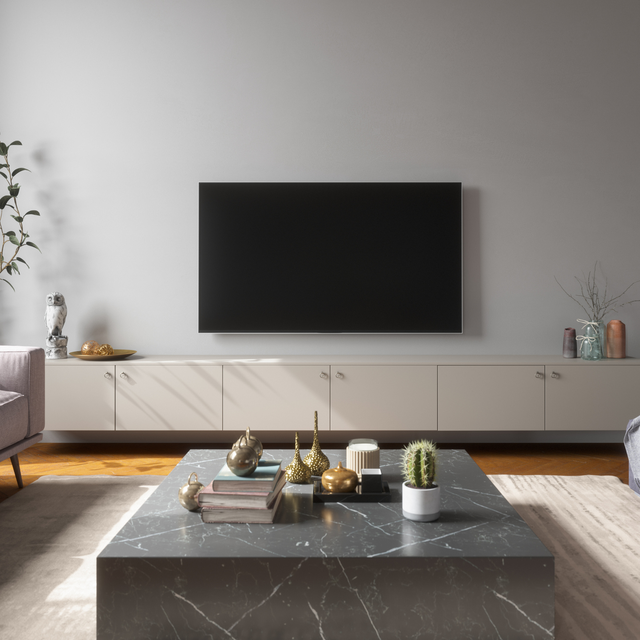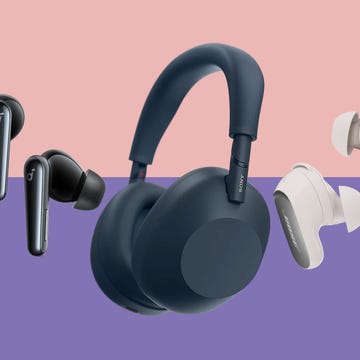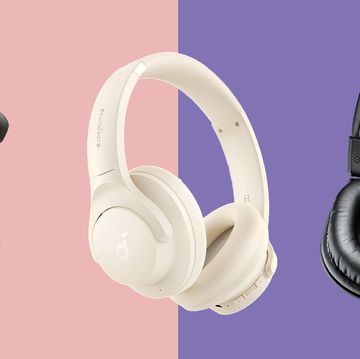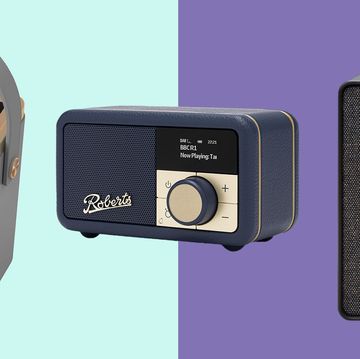It’s always tempting to go big when buying a TV, but getting the very best viewing experience is all about finding the right size. If you want a telly that’ll be wall-mounted in your kitchen, a 65-inch OLED isn’t ideal. Likewise, a 32-inch set will cause serious eye strain if used in many rooms. Luckily, we’re here to help you find the perfect screen size for your space.
If you’re aiming to create an immersive home cinema setup for movies and shows, there’s a good chance that you’ll want to go as big as possible while pairing your TV with a quality soundbar. There’s nothing wrong with that, but we recommend making sure it’s at least 4K resolution – anything lower, and you’ll likely see pixels on the display. While the best OLED TV models are incredible for visual brilliance, we love that some of the best TVs under £500 come in big sizes, too.
So, whether you’ve already got a TV in mind or are still researching, it’s time to get the tape measure out and follow our guide on how to find a model to fit your room. Need suggestions? Here are the best TVs that you can buy, along with our roundups of the best 32-inch TVs, the best 40 to 43-inch TVs, the best 55-inch TVs and the best 65-inch TVs.
What to read next
Know your screen size
TV screens are measured in inches – diagonally from corner to corner instead of side to side. Measure from the top left corner, bringing it down to the bottom right corner, ignoring the bezels around the display.
There you have it: that’s the size of your display. While every manufacturer has different ways of describing how to categorise TVs by size, we consider smaller sets to be between 30 to 40 inches, mid-size models to be between 40 to 55 inches and larger sizes to be 65 inches and up. If you don’t have a tape measure to hand, the screen size is listed on the box and on a label on the back of the TV, too.
Know your resolution
Putting the tape measure aside for a moment, your next step is to find out your display resolution. It’s likely to be Full HD (1920 x 1080 pixels) or 4K/Ultra HD (3840 x 2160 pixels). We recommend that if you’re shopping for a larger screen size, go for at least 4K because this will give you a crisp and clear picture quality. Still, most of the smaller sets don’t need extra pixels to look good.
Recommended viewing distance
While measuring viewing distances isn’t an exact science, here’s the general guide: if you have a 4K TV the ideal viewing distance is from one to 1.5 times the TV screen size. If you have a Full HD set, the viewing distance is about 1.5 to 2.5 times the screen size.
There are a few ways that the recommended distances can be calculated: the first is based on finding the best size for a room (helpful if you’re able to move your furniture), and the second is based on how far you should be from the TV. Getting a large display means you’re able to sit further back to appreciate its high-definition glory, while for small screens, you’ll need to be closer.
Knowing the maximum resolution of the TV display is important as this changes the recommended length of distance that you should sit from the set to get the best possible viewing quality. Just want the viewing distance guide. That’s fine; after all, buying a new TV is supposed to be fun, right?
Here are the recommended distances based on popular TV screen sizes in 4K:
• 32-inches: 32-48 inches (2.7-4 feet)
• 43-inches: 43-64.5 inches (3.5-5.4 feet)
• 50-inches: 50-75 inches (4.1-6.3 feet)
• 55-inches: 55-82.5 inches (4.5-6.8 feet)
• 65-inches: 65-97.5 inches (5.4-8.1 feet)
Don’t fancy doing sums? We understand. Thankfully, it’s easy to find a TV size calculator online that will help you to work out your own measurements.
How to find out TV viewing distances
Bear with us, as this gets formula-heavy fast – but there are a handful of ways you can find the best TV viewing distance for your own room.
One popular approach is that, for 4K TVs, you aim to sit at least the same distance from the set as the screen size – and if your TV is Full HD then multiply the screen size by two. So, if you have a 43-inch 4K TV you would sit at least 43 inches (1.07 metres, 3.5 feet) from the set, and if it’s 1080p you should sit 86 inches (2.2 metres, 7.2 feet) away. These are all minimal estimates, and it’s probably best to add a few extra feet to each of the distance suggestions.
Another approach is to consider the field of view (FoV). This is the viewing angle (measured in degrees) between you and the screen – the closer you get, the larger the number and the wider your FoV is. Experts recommend a TV FoV of between 36 to 40%. Get too close to a screen and you can’t focus without moving back to having to turn your head. If that’s happening, the FoV is too wide.
In this case, you’ll find the recommended viewing distance by multiplying the TV screen size by 1.2. So, for a 50-inch set, a good distance would be 1.6 metres or 5 feet. There’s no hard rule, but this gives you an idea of how far your seat should be from your TV to get the most immersive experience during Happy Valley.
Of course, this approach suggests you can shift your furniture. If you can’t, then start with the viewing distance available and work out a suitable screen size. To do this, you can just divide the available viewing distance by 1.2.
So, if you take the tape measure and find that you have around 100 inches (or around 8 feet) to work with from your comfy living room chair to your TV stand, then the largest TV screen size that’s recommended is 83 inches. In reality, a 65-inch model will still work just fine in that space.
What else should you consider about TV sizes for your room?
Personal preference: You don’t always need a calculator to find the most suitable TV for your room – and the formulas that exist are only designed to be a guide for how to get the best possible viewing experience of your movies and streaming shows. Do you want to wall-mount a 75-inch TV to a smaller living room because your eyesight isn’t the best and you don’t want to squint to see the picture? Ultimately, it’s completely up to you!
Price: Big TVs cost big money, especially if you want an OLED set for the absolute best picture quality. So, the choice of TV may come down to what you can afford, although it’s great that you can now get large 65-inch 4K sets for around £500.
Where your TV is placed: You can often go for a big-screen telly if you’re wall-mounting it, such as above a fireplace in a living room, while a more traditional setup will require that you have a cabinet or stand. We advise having a good think about where you’ll place your TV and how your room is laid out. Can you move your sofa to change the viewing distance? If not, this may instantly determine how big you can go without making the viewing experience uncomfortable.
Simon Cocks is Good Housekeeping UK’s Technology Editor, overseeing tech shopping content and strategy for the title. He previously also worked across other titles including Esquire UK, Digital Spy, Men’s Health UK and Women’s Health UK.
Simon specialises in testing the latest smart gadgets, home entertainment gear, headphones, speakers, portable chargers, radios, e-book readers and smartphones. He's reviewed top tech products from brands including Google, Apple, Amazon, JBL and Bose.
A magazine journalism graduate from Kingston University in 2014, Simon also worked on the Discovery and Silkroad inflight magazines. He then gained experience writing about entertainment at SFX and Total Film. He also contributed reviews and interviews to TwitchFilm (later ScreenAnarchy), CultBox and Frame Rated.
He joined Good Housekeeping UK as the Editorial Assistant for Special Projects and was part of Good Housekeeping’s Consumer Affairs Team between 2014 and 2019. In this role, he conducted price comparison research, wrote detailed household and money-saving advice guides and edited thousands of in-depth reviews for the Good Housekeeping Institute.
He has focused on technology and gadgets since 2020, where he started by testing out power banks and instant cameras. He writes reviews, roundups, news articles and deals updates, and also covers top tech deals during sales like Amazon Prime Day, Black Friday and Cyber Monday.
When not testing out the latest gizmos, you’ll find Simon either catching up with the newest releases at his local cinema or out shooting with his beloved compact camera.
You can follow Simon on Instagram, on Bluesky, on LinkedIn and on Threads.
Jason Murdock was Hearst UK’s Deputy Technology Ecommerce Editor, contributing to multiple titles including Good Housekeeping, Esquire and Digital Spy, between 2022 and 2023.
With more than eight years’ experience covering tech at publications including Radio Times, Newsweek and the International Business Times, Jason has extensive knowledge of the latest gear and gadgets – reviewing phones, tablets, laptops, headphones, smart home products and more – and covering the biggest shopping events of the year, including Black Friday and Amazon Prime Day.
He won Digital Writer of the Year at The Drum's Online Media Awards in 2017 for his cybersecurity coverage in the International Business Times. When not writing and testing the latest gadgets, you’ll find Jason playing the guitar or learning how to parent his new baby.













